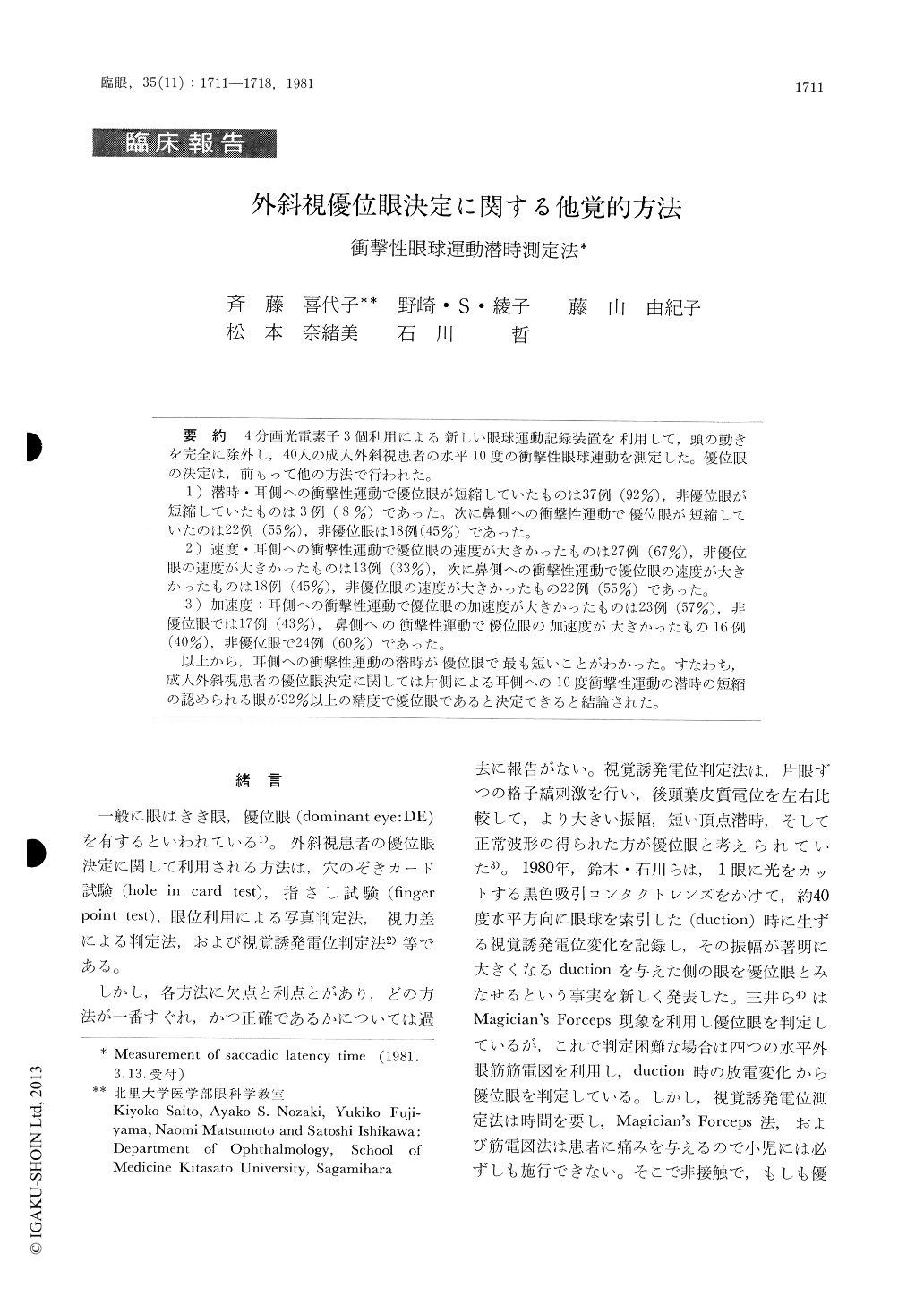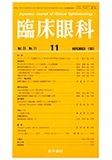Japanese
English
- 有料閲覧
- Abstract 文献概要
- 1ページ目 Look Inside
4分両光電素子3個利用による新しい眼球運動記録装置を利用して,頭の動きを完全に除外し,40人の成人外斜視患者の水平10度の衝撃性眼球運動を測定した。優位眼の決定は,前もって他の方法で行われた。
1)潜時・耳側への衝撃性運動で優位眼が短縮していたものは37例(92%),非優位眼が短縮していたものは3例(8%)であった。次に鼻側への衝撃性運動で優位眼が短縮していたのは22例(55%),非優位眼は18例(45%)であった。
2)速度・耳側への衝撃性運動で優位眼の速度が大きかったものは27例(67%),非優位限の速度が大きかったものは13例(33%),次に鼻側への衝撃性運動で優位眼の速度が大きかったものは18例(45%),非優位眼の速度が大きかったもの22例(55%)であった。
3)加速度:耳側への衝撃性運動で優位眼の加速度が大きかったものは23例(57%),非優位眼では17例(43%),鼻側への衝撃性運動で優位眼の加速度が大きかったもの16例(40%),非優位眼で24例(60%)であった。
以上から,耳側への衝撃性運動の潜時が優位眼で最も短いことがわかった。すなわち,成人外斜視患者の優位眼決定に関しては片側による耳側への10度衝撃性運動の潜時の短縮の認められる眼が92%以上の精度で優位眼であると決定できると結論された。
We measured the latency time of evoked hori-zontal saccadic latency time in 40 patients with exodeviation. The saccades were induced by randomly presenting either of the two targets placed 10 degrees from the center. The eye move-ment was recorded by a new photoelectric oculo-graph with a computer-aided device to cancel the head movement. Prior to the examination, thedominant and the non-dominant eye were deter-mined by visual acuity, hole-in card test, state of fixation and visually evoked cortical responses.

Copyright © 1981, Igaku-Shoin Ltd. All rights reserved.


